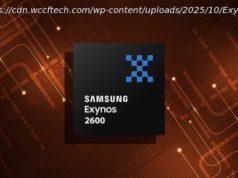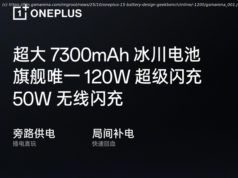Avoid cash-for-crash cams and enjoy greater peace of mind on the daily drive with the best dash cams of 2018.
Drive a car? Then you should consider investing in one of the best dash cams of 2018.
Not only do dashboard cameras provide some peace of mind on the road, but they also allow you to have handy footage in case someone tries to scam you.
The best dash cam can be a crucial bit of tech to in your car in the event of an accident… or in the off chance that something really amazing happens on the road that helps you become YouTube famous.
We’ve sifted through some of the top dash cams out there to zero in on the best dash cams around. It’s important to point out that dash cams are much more than GoPros mounted on your car’s dashboard; these are car-ready cameras that perform some critical functions and can even help you save time and money that would be better spent going back into your vehicle.
Dash cams are handy for run-of-the-mill legal and insurance reasons, but now many insurance companies are reporting an increase in ‘cash for crash’ scams.
In some places, there’s also a bizarre craze in which pedestrians fake hit and run accidents. Dash cam footage can prove to be essential evidence that an incident was faked and not the fault of the driver.
Typically smaller than your standard video or action camera, dash cams also record smaller snippets of footage, usually in increments of one to two minutes at a time.
Dash cams continually record over the oldest clip in order to keep the memory card from filling up with endless footage of your boring morning commute, or wherever else you’re driving.
Older models typically required the user to manually save or tag the appropriate clip in the event of an accident, but new G-Sensor-based incident detection technology has taken over, and now takes care of this automatically.
Generally the best dash cams have similar technology to one another, and for the most part mount somewhere along a car’s front windscreen, or windshield. Of course, wherever you place your dash cam must not block your view of the road.
There are also dash cams that boast additional features that, just like any other technology, see the price increase.
These extra features can include multiple lenses for front- and rear-facing coverage, improved sensor and image quality (HD recording, for example), night vision, built-in Wi-Fi for easy file transfer and numerous parking modes.
These modes use a time-lapse feature as a surveillance function to capture details of those irksome car park prangs when you’re off running errands.
Whenever we get a new dash cam review in, we’ll update this list with more of the best we’ve tested. Keep reading to find out which rank among the best dash cams 2018!
Sensor: 720p| Viewing angle: 140 degrees| GPS tracker: Yes| Memory: MicroSD card (included)
Nextbase has long been a leading name on the dashcam market, and this dual camera unit offers both front- and rear-facing coverage in one simple unit, as opposed to running unsightly wires to a separate unit in the rear windscreen.
The Wide Dynamic Range (WDR) image processor makes low light and night time recording possible, while the crystal clear two-inch display makes it simple to interact with menus and change settings before setting off.
At 720p resolution, the footage isn’t the sharpest on the market, but the unit cleverly stitches both front and rear imagery together into one handy, side-by-side film for easier reviewing.
Naturally, the Nextbase features a loop recording function, which will automatically delete older files as required. But it will also automatically detect and incident and save important clips to the on-board microSD card.
It also features a built-in GPS module, which allows for the vehicle’s exact route, speed and position to be recorded, while a date and time stamp embedded on to the recorded footage provide further additional evidence.
Unfortunately, there isn’t any Wi-Fi or Bluetooth compatibility, so retrieving footage will require extraction of the memory card and synching up with a laptop or PC.
Video quality: 1080p Full HD| Viewing angle: 140 degrees| GPS tracker: Yes| Memory: MicroSD card (included) and internal memory
The super 2.19MP Sony Exmor CMOS sensor provides excellent quality from this sleek and diminutive package, while the additional extra flourishes are an added bonus.
Designed to be mounted just beneath the rear-view mirror, the TW-F770 features just a few small buttons and no external screen – this is because it can be linked to a smartphone via its on-board Wi-Fi.
This enables clips to be quickly and easily sent to a smart device, should you need to access them quickly, for example, but it does add an additional step to any settings and menu changes.
A Super Night Vision feature boosts low-light settings for improved image quality at night, while a neat Time Lapse feature acts as a CCTV camera when the vehicle is parked.
Bear in mind, though, that this mode will require hard-wiring the unit into the vehicle’s power supply, as is the case with most cameras featured on this list, rather than simply using a standard 12V lighter adaptor.
An on-board GPS tracker, as well as speed and upcoming red traffic signal warnings make this a very accomplished piece of kit.
Video quality: 1080p Full HD| Viewing angle: 129 degrees| GPS tracker: Yes| Memory: MicroSD card (included)
Often cited as one of the best solutions for regular or professional drivers, the dual-camera BlackVue covers many bases and boasts numerous additional features that go some way to justifying the lofty price tag.
To get the most out of its features, including a detailed parking surveillance mode, the cameras require hard-wiring to the car’s power supply, but BlackVue makes this easier with an OBD II port converter, which plugs into most vehicle on-board diagnostics ports with ease.
The 2MP CMOS sensor and 129-degree lens capture excellent-quality HD video footage from the front camera, while a smaller unit at the rear records in 720p, with incident detection technology automatically flagging the appropriate video footage.
The BlackVue’s clear advantage over some of the rivals listed here is its Over-the-Cloud abilities, which mean drivers can check live footage from the car via a smartphone, laptop or PC, even when it’s parked.
The small, sleek unit is also neat and doesn’t look out of place on modern vehicles, although the lack of screen and limited buttons mean it does require smartphone tethering to adjust settings.
Video quality: 1080p Full HD| Viewing angle: 150 degrees| GPS tracker: Yes| Memory: MicroSD card
Although the Mio MiVue 698 has been on the market for a year or so, it still remains one of the best packages around, offering superb image quality, front and rear coverage and a clear touchscreen for simple control.
The screen automatically blacks out when it detects movement, to abide with some country’s road laws and avoid unwanted distractions, but clear audio prompts take over to warn of upcoming speed traps once the screen is dimmed.
Built-in GPS takes care of speed and location video overlays, while built-in Wi-Fi makes video and image transfer to smartphones and other devices simple.
Above all else, the extra-wide 150-degree lens does an excellent job of capturing the action, while a high-performing sensor ensures the resulting video footage is some of the best around.
Video quality: 2K and 1080p Full HD| Viewing angle: 145 degrees| GPS tracker: No| Memory: MicroSD card (included)
With its sharp ‘Ultra 2K HD’ image quality, broad 145-degree field of view and super-simple user interface, the Z-Edge Z3 has regularly been voted one of the best devices in its class.
The CMOS sensor and advanced image processor ensure the resulting footage is razor sharp, making it easier to read licence plates and capture incidents with superb clarity.
A 3-inch touchscreen display makes interacting with the camera extremely easy, although you’ll likely just set the camera up and let it do its thing, as most of the functionality has been automated for ease of use.
Like most cameras on the list, the unit will power up and instantly start recording when the ignition is switched on (so long as it’s plugged into a power source), and turn off when power is cut.






